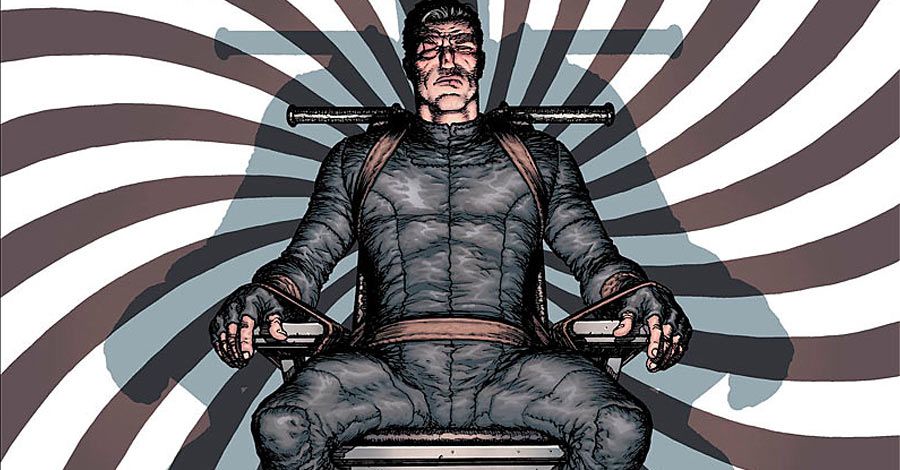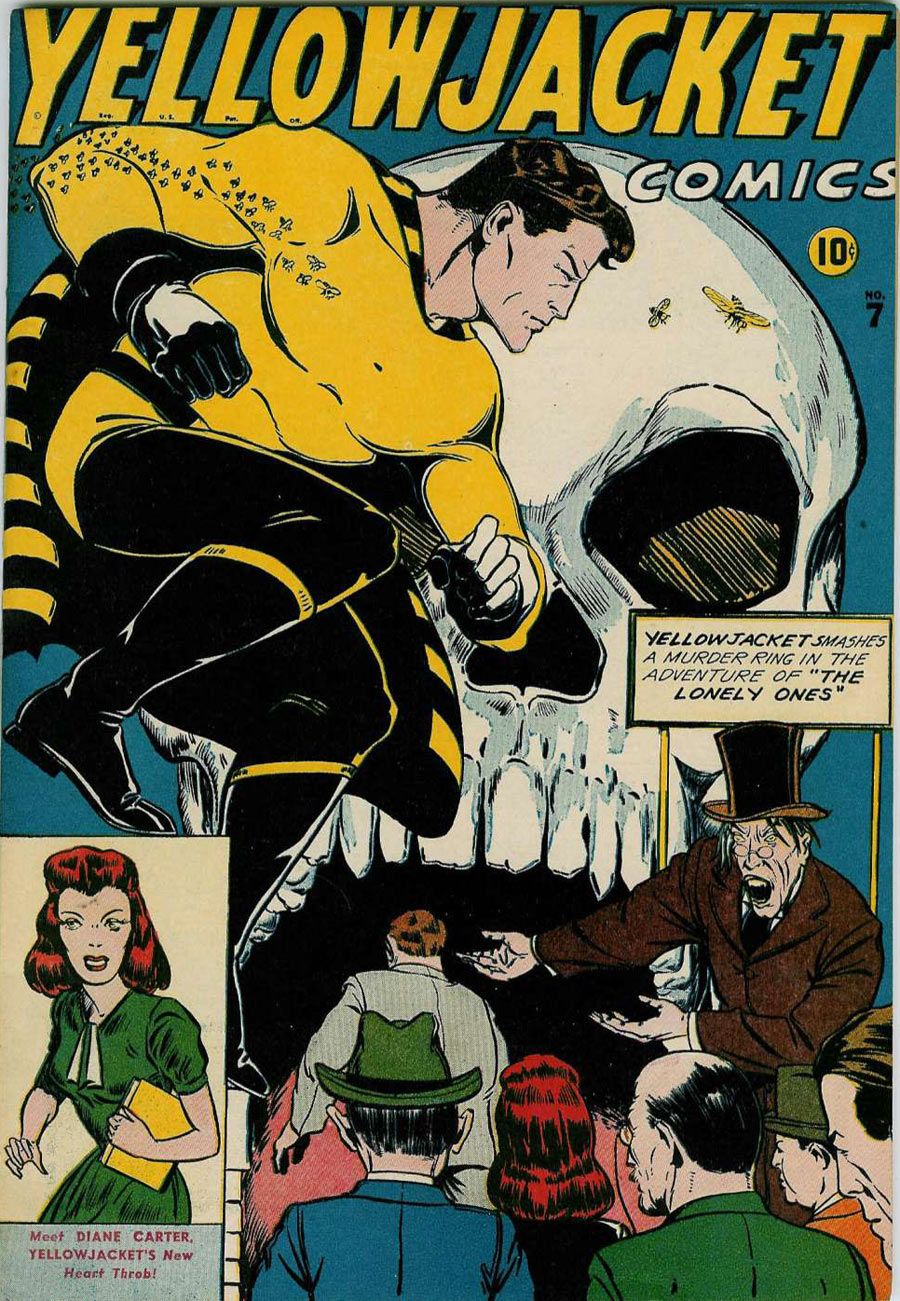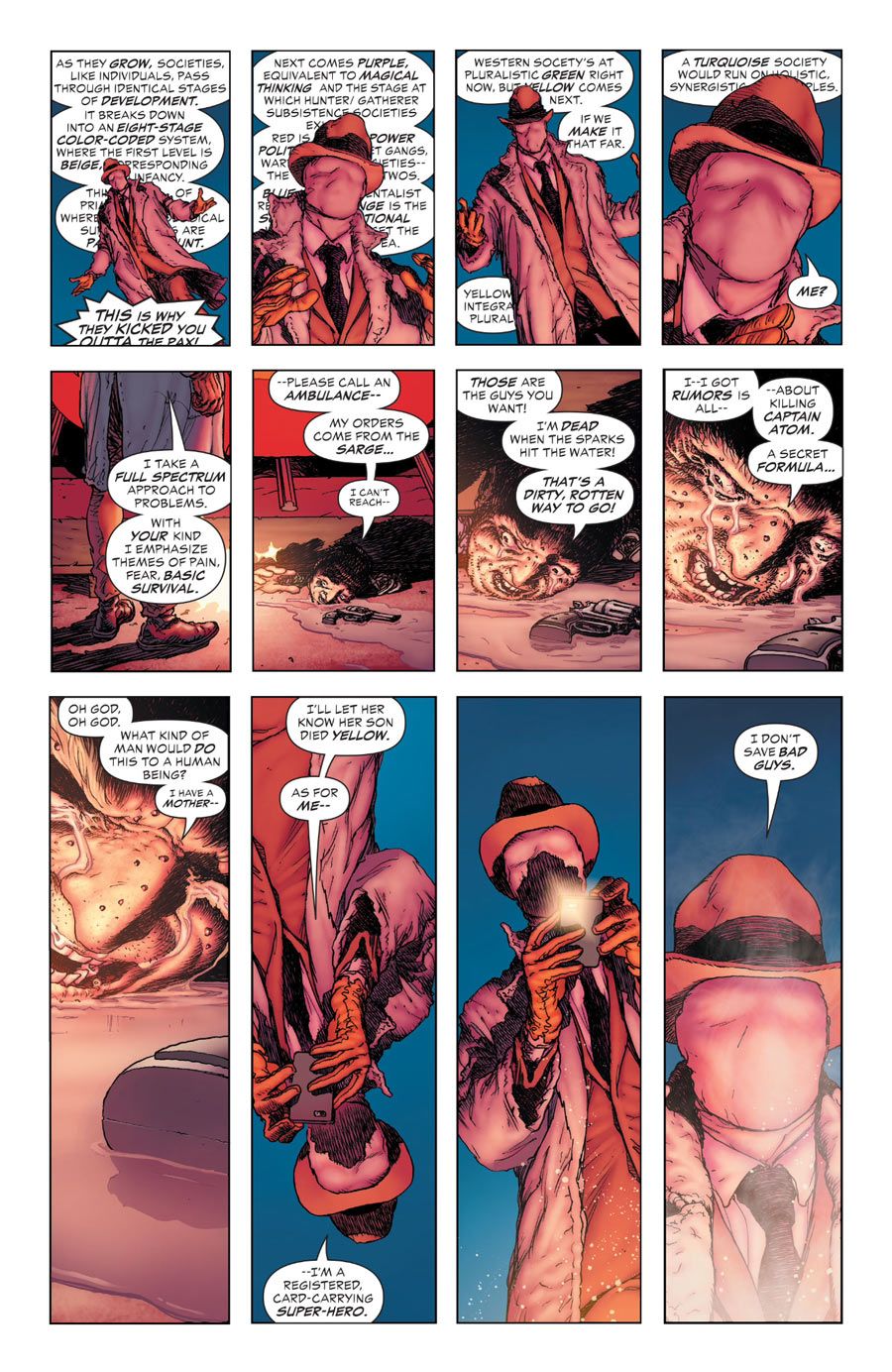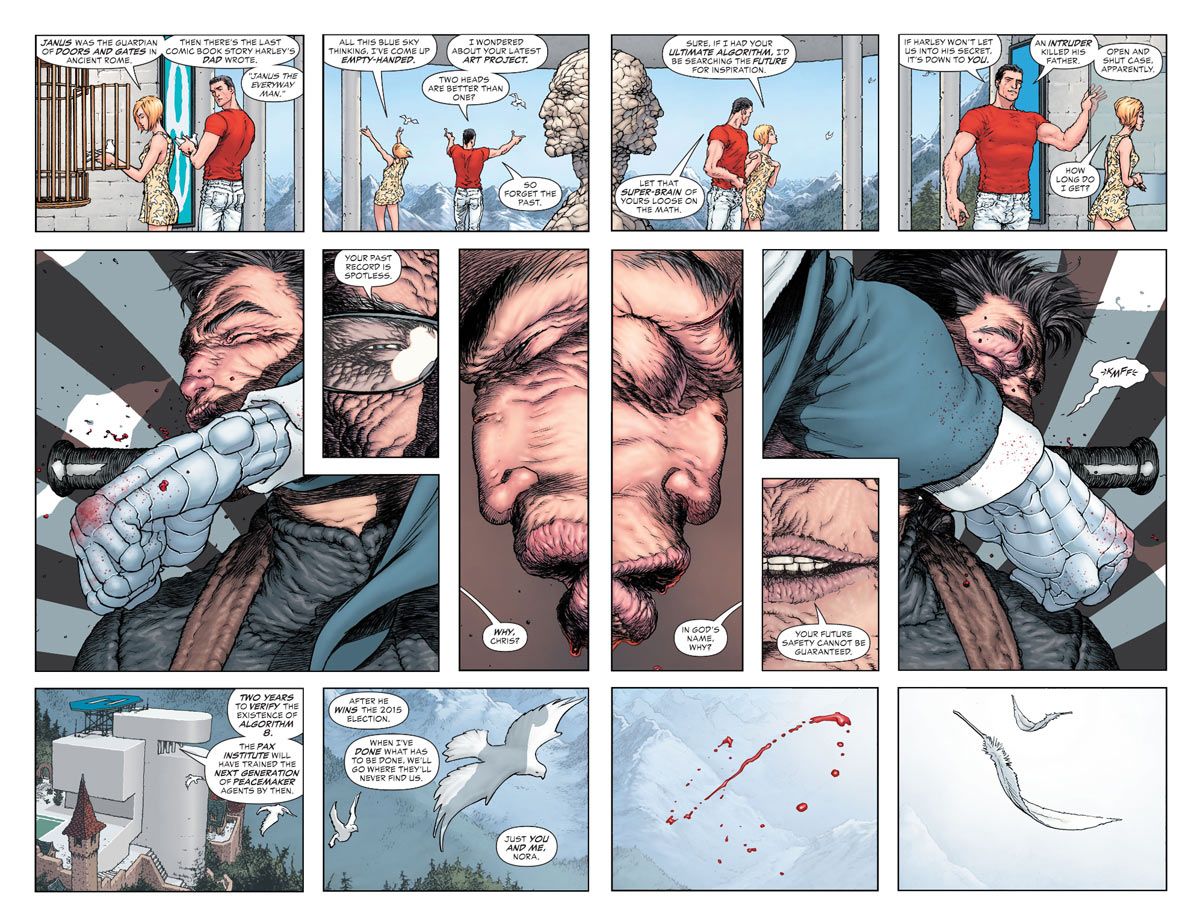In Alan Moore and Dave Gibbons' "Watchmen," the mystery that opens the first issue of the series is nothing but a MacGuffin. "Who killed the Comedian?" is a great hook to pull readers into the story, but "Watchmen" is no detective story. There's no surprising twist at the end, not really. The gigantic mind-warping fake space squid is not the butler, and he did not do it. The Comedian's murder becomes just another piece of machinery in a clockwork story that's as much about Cold War Reaganomics and Thatcherisms and the structural poetics of the form as it is about grim-and-gritty superheroes in the "real" world.
Grant Morrison and Frank Quitely's "Pax Americana" (officially, "The Multiversity: Pax Americana" #1) opens with a death as well. The murder of the President of the United States of America, caught on film, played backwards for the reader like a high-def Zapruder film -- only there's not even the MacGuffin of a murder mystery in this "Watchmen" pastiche. Instead, we see the bullet rise up into the barrel of the killer's rifle.
The Peacemaker's to blame. We see it unfold before our very eyes.
So what's going on here?
In this "Watchmen"-riff-by-way-of-Morrison-and-Quitely, what exactly are they riffing on and what's going on at its core?
CHARLTON 101
At the most basic level, the characters from Charlton Comics are recast in near-"Watchmen" roles for "Pax Americana," as history repeats itself in reverse. While the Comedian from Moore and Gibbons' "Watchmen" was based on Charlton's Peacemaker, here the Peacemaker plays the role of the Comedian, a tough-as-nails special operative for the scheming President. In "Watchmen," the Comedian killed J.F.K. for Nixon. In "Pax Americana," the Peacemaker kills President Harley for -- well, let's leave it there for now.
And the other Charlton heroes on this Earth 4 of the DC Multiverse are recast as reflections of their "Watchmen" selves. The Question is the Rorschach of this world, investigating a murder and a conspiracy involving missing scientists. Blue Beetle is the everyman Nite Owl who is the voice of reason even while luxuriating in his ostentatious gadgetry. Nightshade is the Silk Spectre with the time-ravaged mother. Captain Atom is Doctor Manhattan, master of quantum physics -- a god among men. The Charlton characters inspired the Watchmen characters who now inspired this interpretation of the Charlton characters. It's simple and obvious, but that recursive kernel at the foundation of this comic is symbolic of its whole. This is a Mobius strip of a comic that turns back on itself, from its very inception.
But what if we jump to the end, and look for the beginning there?
In the end, in the final panel of "Pax Americana," we have the tangled domino mask of Yellowjacket, whose debut in 1944 makes him the first of the Charlton heroes. He's dead by the final page of this comic, killed, accidentally, by his own son, in the 1970s. Yellowjacket, in his civilian identity, was a comic book artist. His name was Vince Harley. His son would one day become President of the United States. His son, the murderer.
"Ted, I've been working on the ultimate Question/Beetle mystery," says the Question circa 2008, "America's first superhero -- Yellowjacket."
"He disappeared," replies Blue Beetle.
The Question was on the right track to the mystery at the core of this story, but, as in "Watchmen," the answer isn't what the whole thing is all about.
Yes, President Harley killed his own father, the world's first superhero, when he was but a child. And yes, that event shaped who he would become -- the creator of the superteam of 2008 who would wear bright costumes and present themselves as comic book heroes to a world gripped by a terrorist threat. But it was already destined to happen. The time loop of the Mobius strip of the comic book had already been written. Captain Atom from the future had already been sent back to the past to inspire a lost and mourning not-yet-President Harley. Sent back by Harley himself. Future Harley, who already knew what would happen.
Even if the end seems to hint at a beginning, of an origin story, it is merely an illusion. Young Harley killing his father may seem to lead him to decisions in the future, but would he have made those decisions without the understandings brought to him by a time-traveling Captain Atom who had already seen the future? The Moebius strip neither begins nor ends. It circles back on itself infinitely.
PLAYED IN A KEY OF EIGHT
Images of infinity appear throughout the comic in the shape of the number eight. While "Watchmen" sticks to a rhythmic 9-panel grid as its basic page shape, "Pax Americana" plays in the octave of eight. Eight panels per page, except when it breaks its own rules, much as "Watchmen" does, the clockwork machinery replaced here by the music of colors.
The Question, who saw the world in black and white (in a nod to his Ditkoesque Randian comic book origins) in his earlier superhero days, explains the "spectrum of choices" and how they relate to the development of society during one of his harsh interrogations, though his words are obscured by his actions, as he poses over his victim. Beige, he explains, is the color of infancy. Purple is the advent of magical thinking. Red is power and politics and war. Blue seems to indicate rational thought, but the words are obstructed by Quitely's gesturing Question. Green is the pluralism of Western society, and yellow comes next, says the Question, "if we make it that far." Yellow has something to do with integrating plurality, but with what? And, finally, turquoise would be a holistic, synergistic society. The idea is incomplete, only seven of the eight colors of the "Eight-Stage Color-Coded System" are identified, but it provides a blueprint for the visual motifs of the comic, and Nathan Fairbarn's strikingly symbolic use of color, and aligns with what we can discern about President Harley's motives.
President Harley, who wears a figure eight on his signet ring. President Harley who introduced, as his immediately realized campaign promise, a symbolic freedom from the terrorism of today as he sends his superteam to not just rebuild the fallen twin towers, but to materialize three new towers out of the very air itself. President Harley who, as Governor Harley, shows Captain Atom a comic book his father once drew and alludes to the need for superheroes to "restore symmetry to a broken world." President Harley who, at age 23, saw the secret algorithm of the universe unfold before him. President Harley who accidentally killed the world's first superhero as a child.
President Harley who commanded the Peacemaker to murder... President Harley. Expecting to be resurrected by the godlike Captain Atom. Expecting society to embrace the Pax Americana, where a Christ-like leader returns from the dead to bring about a new age of peace and prosperity.
On page 1 of the comic we see the death of President Harley reversed, but it's only rewound film footage. He is never actually resurrected in the comic. The turquoise age of holistic synergy, of peace, of the Pax Americana, is never realized within these pages.
Instead, the Moebius strip continues. Like the overblown logic of a pulp comic where the only hope for America is to kill America's most beloved leader. But even that misguided hope is trapped inside, alongside the promise of something better. What's left remains incomplete, a figure eight circling back on itself. The superhero ideal put into service of politics and message, strangled by its inability to break free from its own tropes and inevitable patterns, eight panels at a time.
Tim Callahan wrote the weekly WHEN WORDS COLLIDE column for COMIC BOOK RESOURCES for over five years. He now writes and publishes material for role-playing games, including the "Peril on the Purple Planet" box set from Goodman Games, and the bimonthly space fantasy zine "Crawljammer."




